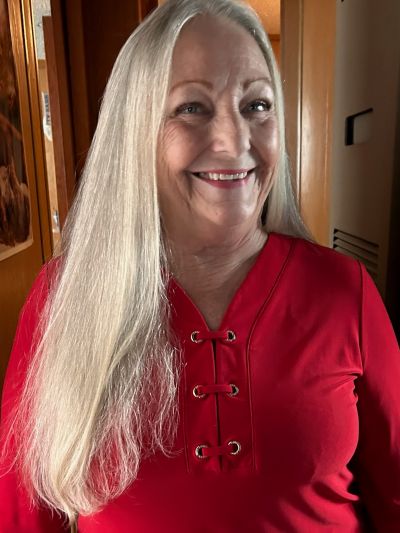SPRINT® PNS; Shoulder Pain
Ever since Deb was a child, she loved to draw. As an adult, she specialized in charcoal portraits for people, and a few years ago, she began dabbling in acrylic painting. Unfortunately, Deb was forced to put her art materials away because even holding a pencil or brush in position caused too much pain in her right shoulder.
Deb’s shoulder pain began more than 30 years ago when she was a passenger in a car that was suddenly cut in front of by another car. Deb had placed her hand against the dash to protect herself, but the impact of the collision threw her right shoulder out and tore her rotator cuff. She eventually had surgery to repair her rotator cuff, but the pain remained. Fast forward to 2008, and Deb tore her shoulder again as she attempted to move a bird bath in her garden.
“There’s a lot of scar tissue in my shoulder now from all of this,” explains Deb. “And I have these pebble-like calcium deposits that are rubbing on my tendons and bone, which continue to cause more damage and a lot of pain.”
Limited relief and lifestyle
Over the years, she says she dealt with the pain by taking over-the-counter medications and placing lidocaine patches on her shoulder. About five years ago, she began seeing Dr. Gemayel Lee, an interventional pain specialist and SPR consultant at Relive You Center for Advanced Pain Management in San Diego, California. At first, Dr. Lee gave her regular steroid injections, which helped calm the inflammation that was contributing to her pain. “The shots would help, but you can only have so many of those a year, and when they wore off, it was really tough,” says Deb.
She explained that Dr. Lee wanted her to try water therapy, but she resisted because she was busy, and it would have been difficult to make it to a pool. Instead, she just continued to take pain medications, apply pain creams, wear patches — and get the shots when she could.
Eventually, her pain got so bad, she had difficulty caring for herself. “I’d have these really bad flare-ups and I couldn’t even put my arms in my pajamas or shirts. My sister would have to help me and put them on a certain way, so I didn’t have to raise my arms.”
Goodbye art
Deb stated she felt depressed because lifting anything, even a pencil or paintbrush, was out of the question. “I really missed doing my art,” she recalls. By then, she wasn’t sleeping very well and was exhausted, so she shared this with Dr. Lee. “I told him, ‘I can’t move my shoulder anymore,’” says Deb. “I told him that I was wearing patches every day and putting pain cream on to get by, but I said I can’t take this pain anymore.”
In response, Dr. Lee told Deb about the SPRINT® Peripheral Nerve Stimulation (PNS) System, but Deb was hesitant. She didn’t want a procedure — even a minimally invasive, outpatient treatment like SPRINT PNS — so she held off. After several months without pain relief, Dr. Lee mentioned the SPRINT treatment again and Deb decided to give it a try.
“Deb was experiencing neuropathic pain in her shoulder due to her rotator cuff injury” recalls Dr. Lee. “While the damage to her shoulder is permanent, I have seen how SPRINT PNS has helped other patients with shoulder pain like hers. I believed this 60-day treatment could potentially not only help relieve her pain, but that pain relief might also help improve her shoulder function”
Relief and a return to life
Once Deb’s treatment began, she explains that it took just a couple days before she began to notice an improvement in her shoulder pain, and it continued over time. “Within two weeks, I was like, ‘Wow, I’m so glad I tried SPRINT PNS,’ because I actually started to feel much better,” she says.
Today, she gives a huge smile as she demonstrates how she’s regained function of her shoulder as a result of her pain relief by lifting her arms up over her head. And she marvels at how far she’s come. “I am sleeping better, and I have a tremendous amount of energy. I feel really good about things. Before, I just went through the day crying and using ice packs. I don't do any of that now. I don't put patches on my shoulder anymore. I just exercise my shoulder a little bit when it starts feeling stiff and it has helped a lot,” she says.
Without the shoulder pain, Deb is happy to help her sister with things, rather than the other way around. Deb plans to get back to her art soon. “I’m getting my materials ready and I’m excited because now I know my shoulder isn’t going to hurt.”
